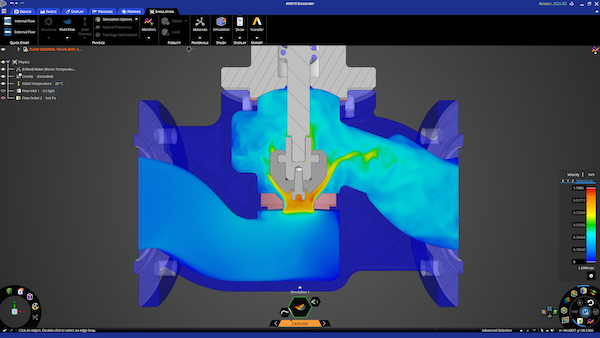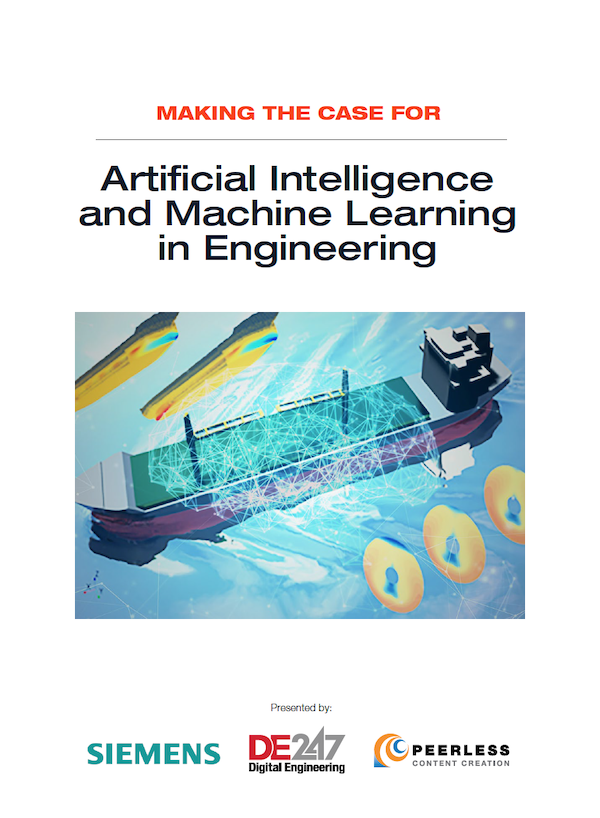Ansys Discovery Aims to Help Simulation Practices Shift Left
New release combines instant physics simulation, high-fidelity simulation, and direct modeling in a single user experience aimed at promoting widespread use of simulation through out the design process.

Structural analysis of an Advenchair assembly within Ansys Discovery. Image Courtesy of Onward Project LLC.
Latest News
July 21, 2020
Continuing its quest to democratize simulation and promote engineering productivity, Ansys is releasing its newest platform, which combines instant physics simulation, high-fidelity solvers, and interactive direct modeling capabilities in a single user experience patterned on popular gaming technology.
Ansys Discovery, to launch officially by end of month, integrates Ansys simulation technology in a way that makes it easier and more compelling for non-simulation experts to take advantage of the technology early in the design cycle and throughout the complete workflow. The next-generation platform sports a completely redesigned and intuitive user interface that moves away from the text-based readouts common to most traditional simulation tools to deliver in-context guidance along with the push and pull interaction that has become commonplace in today’s games and modern business software.
“Because of the games people play and new technologies like augmented reality (AR) and virtual reality (VR), there is a change in expectation for the user experience,” notes Mark Hindsbo, general manager, design business unit at Ansys. “We wanted to create an experience that is engaging and supports the process of exploration, helping simulation become a valuable tool early on in the design process.”
From a single user interface, engineers can incorporate simulation into all stages of the design workflow. First, they can tap Ansys Discovery’s direct modeling and real-time physics simulation capabilities (which hail from its SpaceClaim acquisition and the Discovery Live products) to understand the impact of design decisions early on, leveraging the software’s performance to explore more iterations, ask questions, and see immediate results. Once the design space is narrowed, engineers can leverage Ansys’ range of high-fidelity solvers to do more robust and intensive simulations as part of design validation.

Ansys Discovery executes interaction design exploration with real-time simulation of fluid flow behavior within a flow control valve. Image Courtesy of Ansys
If you’re a design engineer and you wanted to take a look at what a certain pressure might do structurally to a particular design concept, you’d typically have to navigate between different physics and fidelities, Hindsbo says. “In the world, today, you’d have to go through three to five different tools, put different boundary conditions on, and learn all the nuances of the different tools to go through the modeling exercise,” he says. “That’s when simulation becomes too confusing. What we’ve done here is under the hood are different solvers, but they are driven by the same easy-to-use interaction.”
Having the complete simulation workflow managed and accessible through the same simple interface also insures data and details don’t get lost in translation between, say, an FEA solver and CFD solver, or through handoffs between design engineers and simulation analysts. “With the same version of the truth, they can help each other in a seamless workflow instead of having two disconnected worlds,” he added. “This kind of tool empowers many more people to do more analysis while providing seamless transfer back and forth between the two worlds.”
To get an early look at Ansys Discovery, check out this video.
More Ansys Coverage
Subscribe to our FREE magazine, FREE email newsletters or both!
Latest News
About the Author
Beth Stackpole is a contributing editor to Digital Engineering. Send e-mail about this article to DE-Editors@digitaleng.news.
Follow DE





